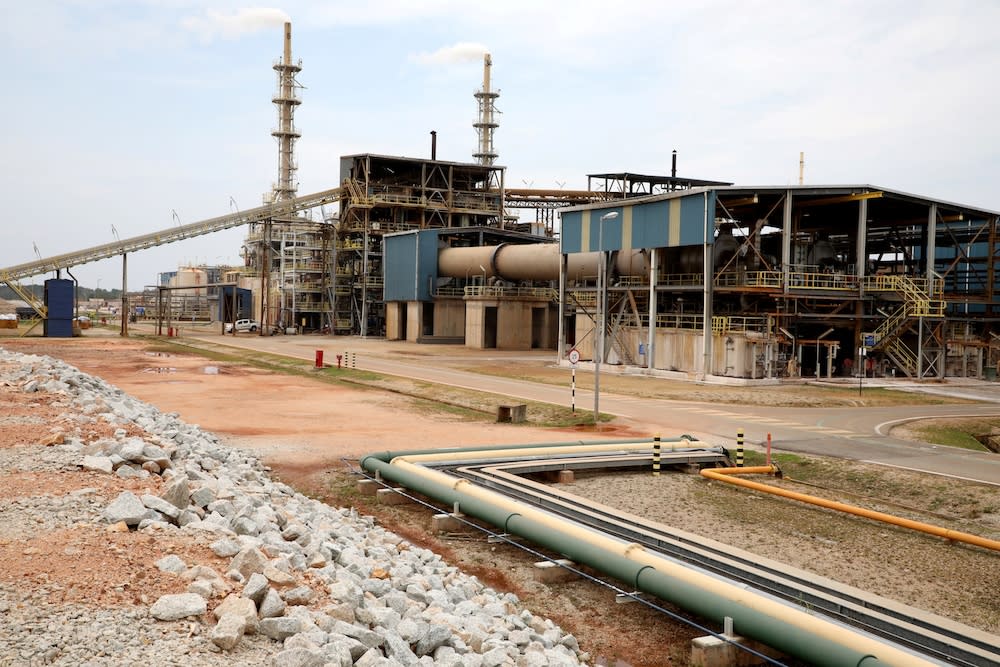Report: Malaysia breaking China’s dominance on rare earths; illegal mining concerns amid RM809.6b deposits

KUALA LUMPUR, Nov 19 — With Australian miner Lynas’ rare earth processing plant operating in Pahang, Malaysia is breaking the world’s largest rare earths producer China’s dominance over these metals and could help prevent supply chain disruptions, a report said.
According to Singapore news outlet CNA, Lynas — which was allowed by the Malaysian government last month to continue importing and processing rare earths at its plant in Pahang until 2026 — is now the largest rare earths processor outside China.
Lynas reportedly said its rare earths plant — which is the world’s largest at 100 hectares or equivalent to nearly 150 football fields — can supply almost a third of the world’s demand for rare earths, except for China.
CNA cited University of Malaya’s foreign affairs and security analyst Collins Chong as saying: “Malaysia is breaking [China’s] dominance of rare earths.”
CNA listed the importance of rare earths in multiple high-tech products as well as green technology, such as smartphones, automobiles, energy-saving home appliances, energy-saving lifts, wind turbines, and electric vehicle batteries.
According to CNA, China accounted for 70 per cent of global production of rare earths last year, followed by the US at 14 per cent and other countries like Australia and Myanmar, based on US Geological Survey figures. It noted that the US itself has to export rare earth raw materials to China before they could be used to manufacture magnets that are used in products.
While there are sufficient rare earth deposits globally, CNA reported China’s advantages in processing these materials — which are complex to extract — including in terms of technology, labour and cost.
Amid increasing demand for rare earths globally such as in China itself which has the top offshore wind power capacity in the world, China had last week imposed tighter controls by requiring companies to report on transactions and where they are exporting rare earth to.
CNA cited Chong as saying that China had in the past used rare earths as a “convenient strategic tool” for its national interest such as when it had in 2010 briefly stopped exporting rare earths to Japan, and noting the need for countries to ensure they are not beholden to others.
CNA said Japan has invested in Lynas to ensure a long-term and resilient supply chain for rare earths, with Chong describing it as being more cost-effective for Lynas to process rare earth — mined in Australia — in Malaysia before exporting the processed products globally.
In the CNA report, Malaysia Nature Society (Pahang) chair Noor Jehan Abu Bakar expressed worry over the permanent disposal facility for Lynas’ low-level radioactive waste being built now after locals protested, citing concerns due to what had happened in Bukit Merah in the past.
CNA said Japan’s Mitsubishi Chemicals’ rare earths processing plant in Bukit Merah, Ipoh, Perak was closed down in 1994 after the locals experienced birth defects and leukaemia. CNA said the plant did not have a long-term waste facility and there were radiation leaks from the radioactive materials stored in rusted drums, with the company later donating RM500,000 to the locals under an out-of-court settlement and using US$100 million for the years-long clean-up and with a permanent waste facility finally built in 2014.
But CNA reported the International Atomic Energy Agency as saying that Lynas has fulfilled the requirements for radiation safety, and that Lynas itself has highlighted that the Bukit Merah residues are 50 times more radioactive than Lynas’ residues.
Chong was also quoted dismissing the comparison: “This is an entirely different setting, and Lynas has proven itself to be strictly adhering to all the regulations in place.”
According to CNA, Malaysia’s total deposits of rare earths is estimated to be worth RM808.6 billion, including Perak’s estimated US$20 billion reserves. A pilot project was approved in Perak last year to mine rare earths.
Association for the Protection of Natural Heritage Malaysia’s president Damien Thanam Divean said there are still many new guidelines that have to be created in Malaysia to ensure the safety of rare earth mining here, but said illegal mining has started such as in Kuala Pilah in Negeri Sembilan — which is currently being investigated.
Damien said the Kuala Pilah illegal mining involved a few kilometres of pipes inside a forest and toxic acid being used to pump rare earths out of the ground, expressing concern over the quality of the pipes including whether these were manufactured for such purposes and the high risk of toxic acid leaking into the ground.
He was also reported saying that the waste in that illegal mine was not being stored in a “proper pond”, unlike the purpose-built version in Perak which features a proper cement base and alarm system for leak detection.
While no sickness in Kuala Pilah has been reported as of now, Damien reportedly said the harvest in palm oil plantations surrounding the illegal mine — now closed off by the authorities — would have definitely been damaged if the illegal mining activities had carried on.
Damien reportedly said it is unclear how many illegal rare earth mines are still operating undetected, but noted that some “have been busted” with citizens from China, including mine owners and labourers, arrested.



